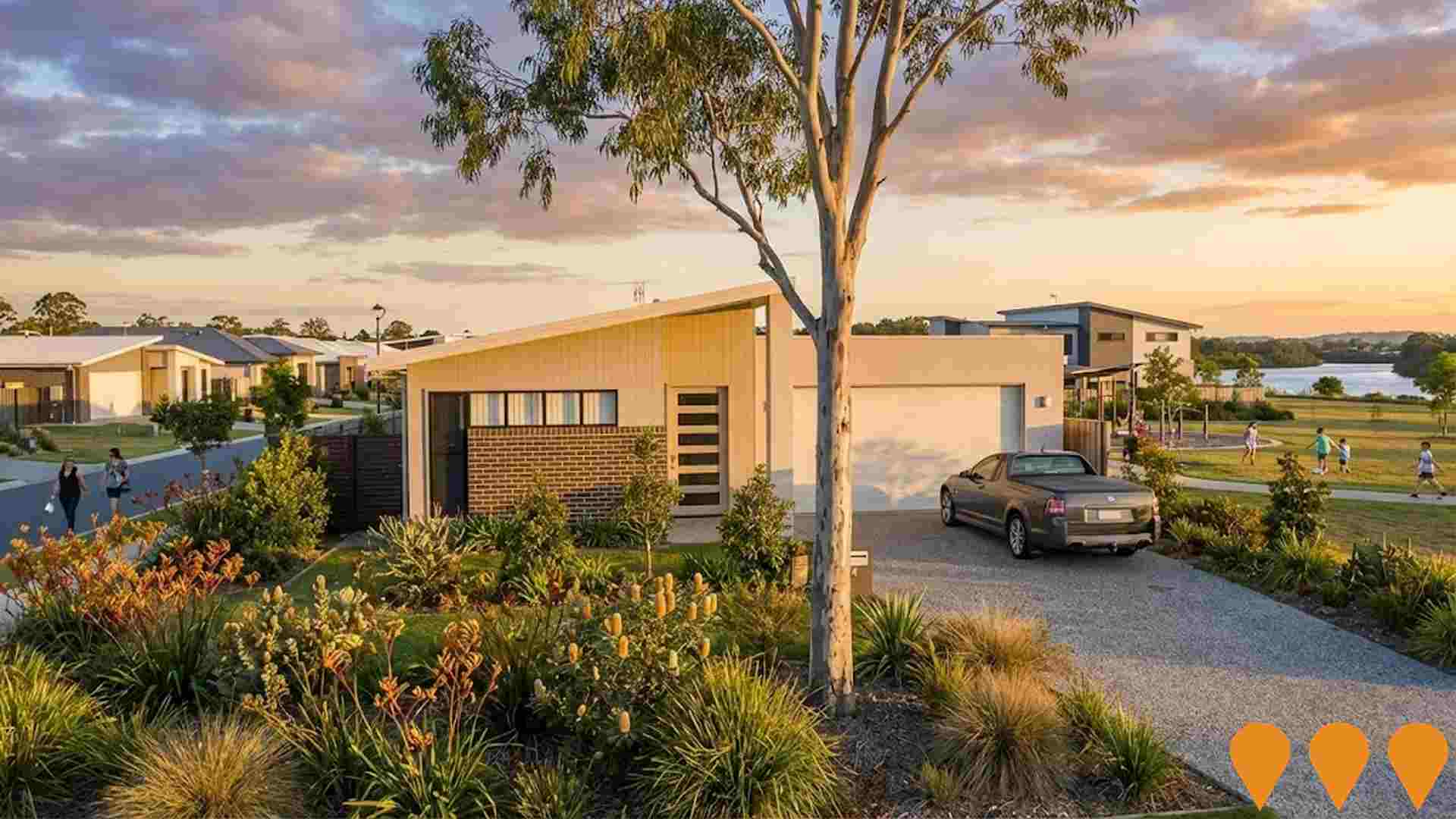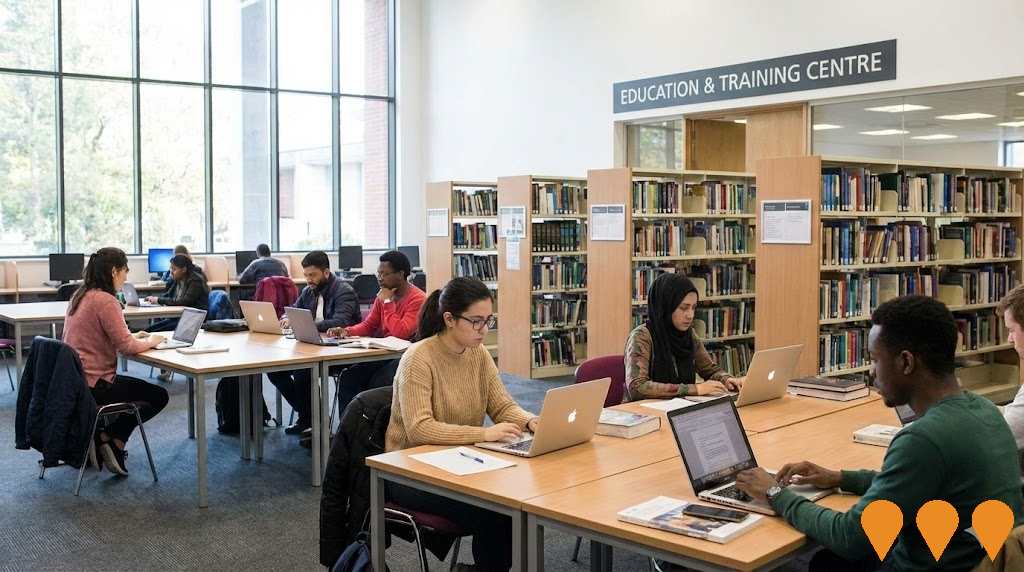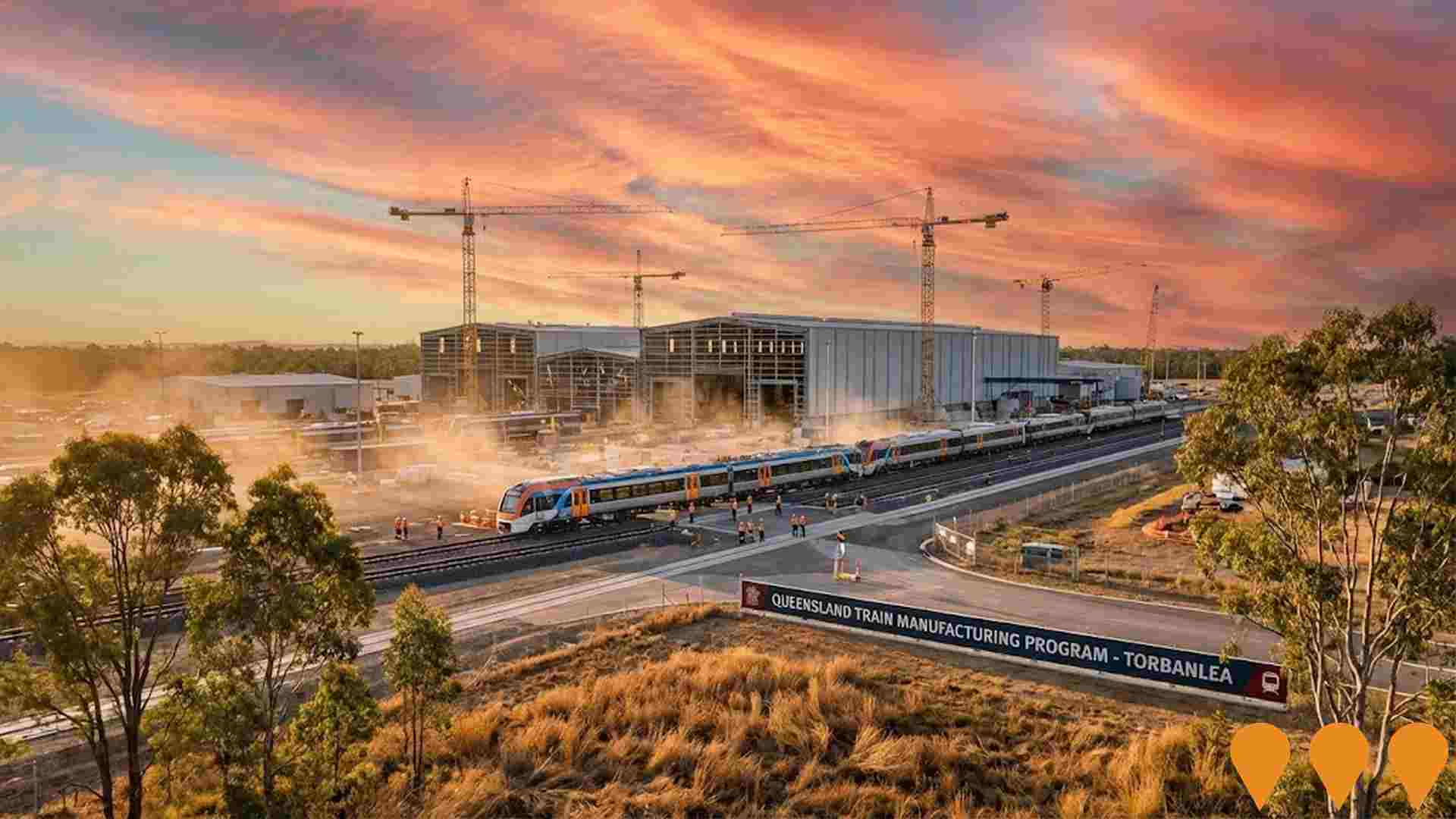Chart Color Schemes
est. as @ -- *
ABS ERP | -- people | --
2021 Census | -- people
Sales Activity
Curious about local property values? Filter the chart to assess the volume and appreciation (including resales) trends and regional comparisons, or scroll to the map below view this information at an individual property level.
Find a Recent Sale
Sales Detail
Population
Yarrabilba lies within the top 10% of areas nationally in terms of population growth performance according to AreaSearch analysis of short and medium-term trends
Yarrabilba's population is approximately 16,045 as of August 2025. This represents an increase of 5,339 people since the 2021 Census, which reported a population of 10,706. The change is inferred from the estimated resident population of 14,641 in June 2024 and an additional 1,859 validated new addresses since the Census date. This results in a density ratio of 410 persons per square kilometer. Yarrabilba's growth rate of 49.9% since the 2021 census exceeds the national average of 8.6%. Population growth was primarily driven by interstate migration, contributing approximately 73.8% of overall population gains.
AreaSearch uses ABS/Geoscience Australia projections for each SA2 area, released in 2024 with a base year of 2022. For areas not covered and years post-2032, Queensland State Government's SA2 area projections are adopted, released in 2023 based on 2021 data. These state projections do not provide age category splits; hence proportional growth weightings are applied using ABS Greater Capital Region projections for each age cohort, released in 2023 based on 2022 data. By 2041, the area is predicted to increase by 11,756 persons, recording a gain of 64.5% over the 17 years.
Frequently Asked Questions - Population
Development
The level of residential development activity in Yarrabilba was found to be higher than 90% of real estate markets across the country
Yarrabilba averaged approximately 405 new dwelling approvals annually over the past five financial years, totalling 2,027 homes. As of FY26113 approvals have been recorded. Each dwelling built has resulted in an average of 2.8 new residents per year between FY21 and FY25, indicating strong demand that supports property values. The average construction cost value for new homes is $381,000, reflecting more affordable housing options compared to regional norms.
In FY26, there have been $19.6 million in commercial approvals, demonstrating moderate levels of commercial development. Compared to Greater Brisbane, Yarrabilba records elevated construction activity, with 48.0% above the regional average per person over the past five years. Recent construction comprises 95.0% standalone homes and 5.0% medium and high-density housing, maintaining the area's traditional low density character. With around 31 people per dwelling approval, Yarrabilba shows characteristics of a growth area.
By 2041, it is projected to grow by approximately 10,352 residents. At current development rates, new housing supply should comfortably meet demand, providing good conditions for buyers and potentially supporting growth beyond current population projections.
Frequently Asked Questions - Development
Infrastructure
Yarrabilba has moderate levels of nearby infrastructure activity, ranking in the top 50% nationally
Area infrastructure significantly impacts local performance. AreaSearch identified nine relevant projects: Yarrabilba Dollarbird Drive Intersection, Yarrabilba Central, Yarrabilba Second Access & Road Network Upgrades, and The Buzz at Yarrabilba.
Professional plan users can use the search below to filter and access additional projects.
INFRASTRUCTURE SEARCH
 Denotes AI-based impression for illustrative purposes only, not to be taken as definitive under any circumstances. Please follow links and conduct other investigations from the project's source for actual imagery. Developers and project owners wishing us to use original imagery please Contact Us and we will do so.
Denotes AI-based impression for illustrative purposes only, not to be taken as definitive under any circumstances. Please follow links and conduct other investigations from the project's source for actual imagery. Developers and project owners wishing us to use original imagery please Contact Us and we will do so.
Frequently Asked Questions - Infrastructure
Yarrabilba Master Planned Community
Australia's first circular economy community located between Brisbane and Gold Coast. When complete, the Priority Development Area (PDA) will provide up to 20,000 dwellings to house a population of up to 50,000 people. It features over 20 parks, quality schools, community hubs, a future Town Centre, and is developed with sustainable design principles. The project is an ongoing, long-term development with various stages of construction for different components (e.g., residential stages, business park, road extensions, and sports parks). The project was acquired by Stockland Supalai Residential Communities Partnership Pty Ltd on November 29, 2024.
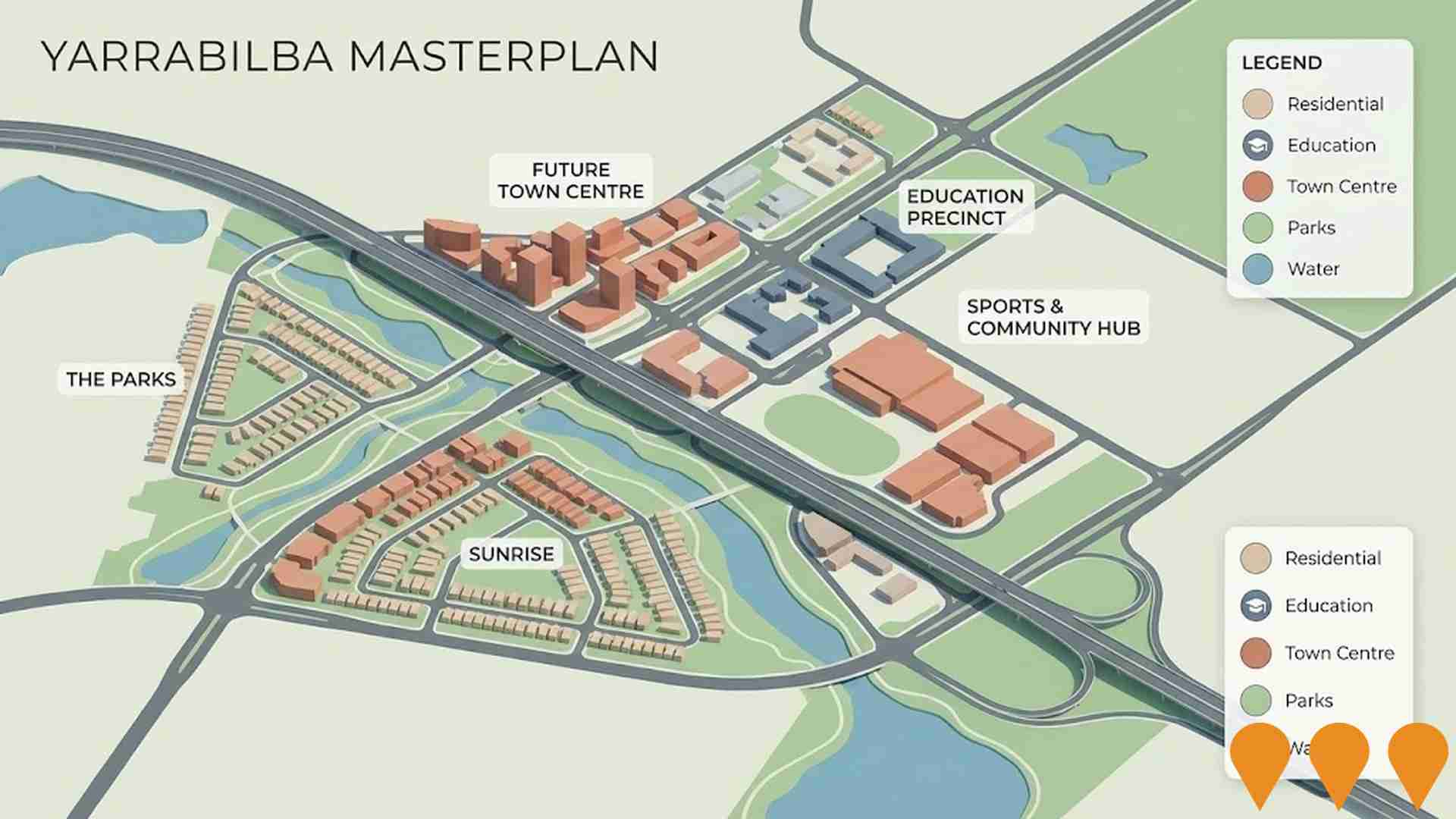
Yarrabilba Master Planned Community
Long-term master planned community development by Stockland (acquired from Lendlease in November 2024) spanning 2,222 hectares to accommodate up to 50,000 residents across 20,000 dwellings. The project is a Priority Development Area (PDA) under Economic Development Queensland and is expected to take 20-30 years for full development. Ongoing work includes: construction of the **Yarrabilba Business Park** (forecast opening Late 2026), **Jimbillunga Drive** road extension (forecast completion Mid 2027), and continued development in the **Ridgeline** precinct. Planning is underway for the major **Yarrabilba Town Centre** (Precinct 7), which is anticipated to provide approximately 215,000mý of commercial and retail space, up to 8 storeys of high-density development, and approximately 4,500 dwellings.
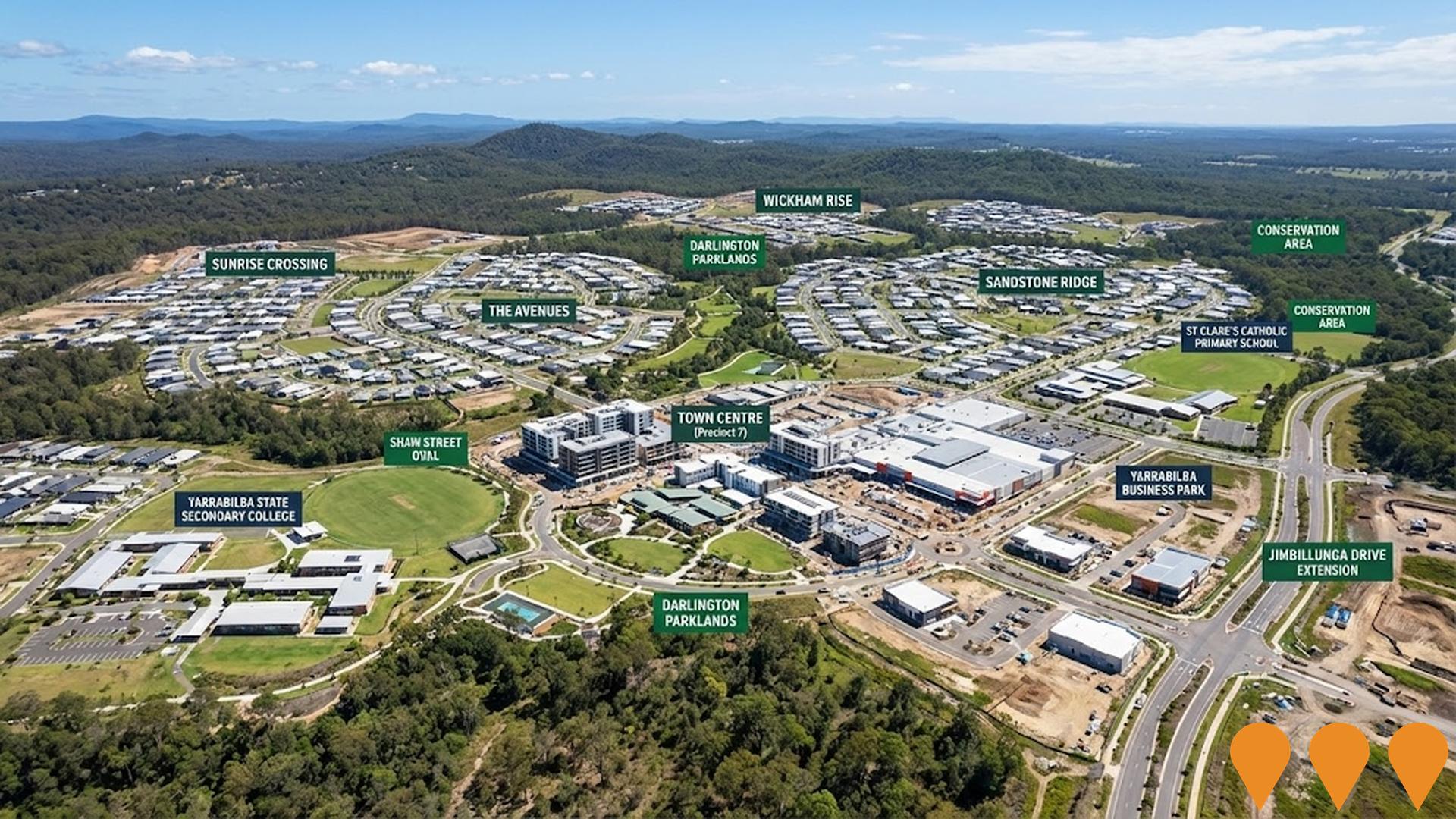
Yarrabilba and Greater Flagstone Infrastructure Funding Agreement
A $1.2 billion, 45-year infrastructure funding and delivery agreement signed in 2019 between Economic Development Queensland (EDQ), Logan City Council and nine private developers to deliver trunk roads, water, sewer, parks and community facilities supporting the Yarrabilba and Greater Flagstone Priority Development Areas. Multiple packages are currently under construction or completed, with works continuing progressively until approximately 2060-2065.
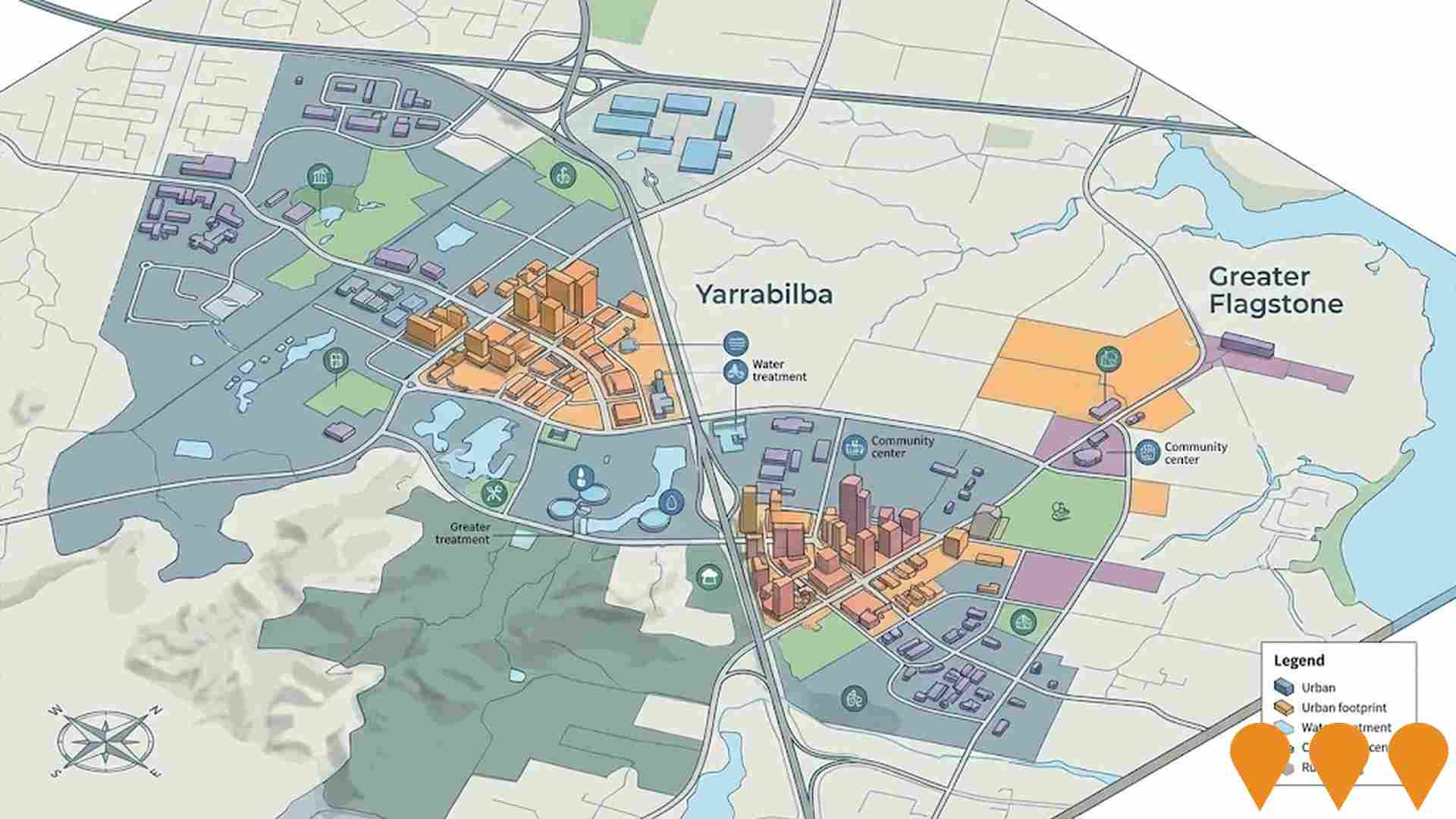
Greater Flagstone Priority Development Area
The Greater Flagstone Priority Development Area is a 7,188-hectare masterplanned community led by Peet Limited, planned to accommodate up to 138,000 residents and 51,500 dwellings over 30-40 years. It is currently in the construction phase, with a major new precinct of over 1,600 homes recently approved and earthworks/servicing for multiple stages ongoing. The ultimate plan includes a 126-hectare CBD, 330 hectares of green space, and major health, education, and business precincts.
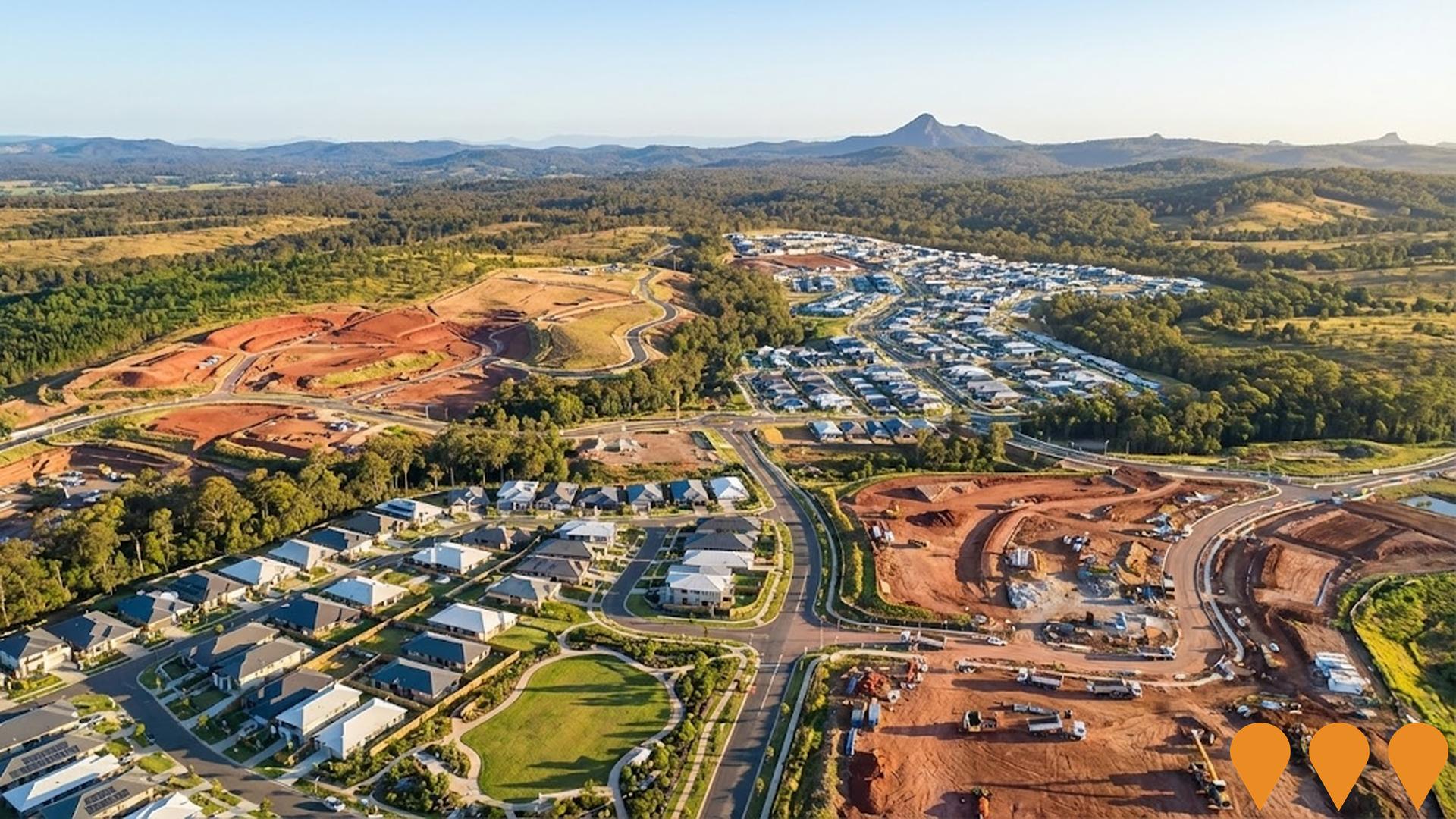
Yarrabilba Central
Yarrabilba Central is the future principal town centre for the Yarrabilba masterplanned community, planned to deliver a major mixed-use precinct with regional retail, commercial offices, civic and community facilities, entertainment, dining and higher-density residential uses. The centre will serve the ultimate population of approximately 45,000 residents across the Yarrabilba PDA and surrounding areas.
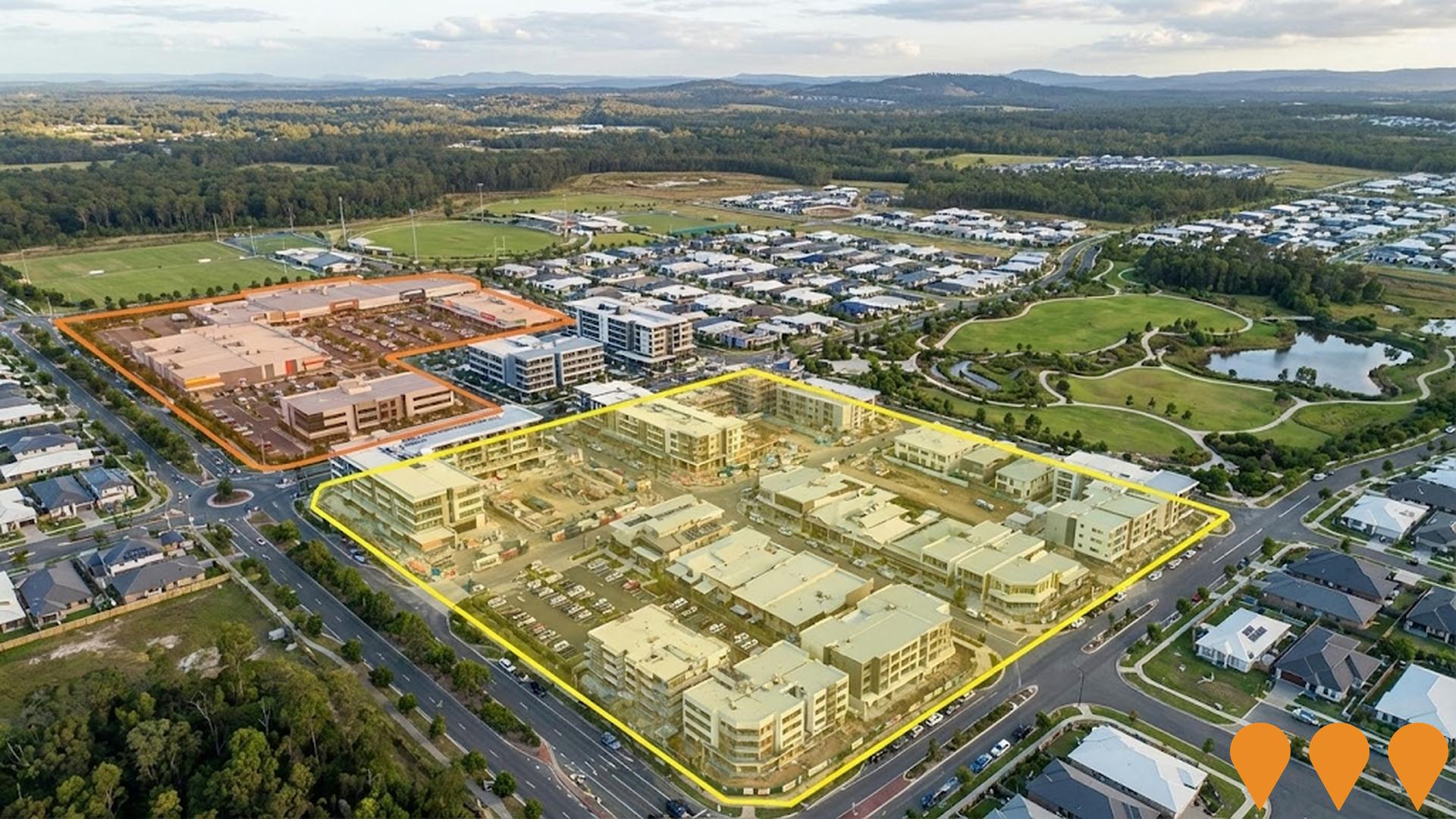
Yarrabilba Second Access & Road Network Upgrades
Construction of a new signalised intersection on Waterford-Tamborine Road to provide a second access point to Yarrabilba via Dollarbird Drive, including a 2.5km extension of Jimbillunga Drive and Wentland Avenue to improve connectivity and relieve congestion.
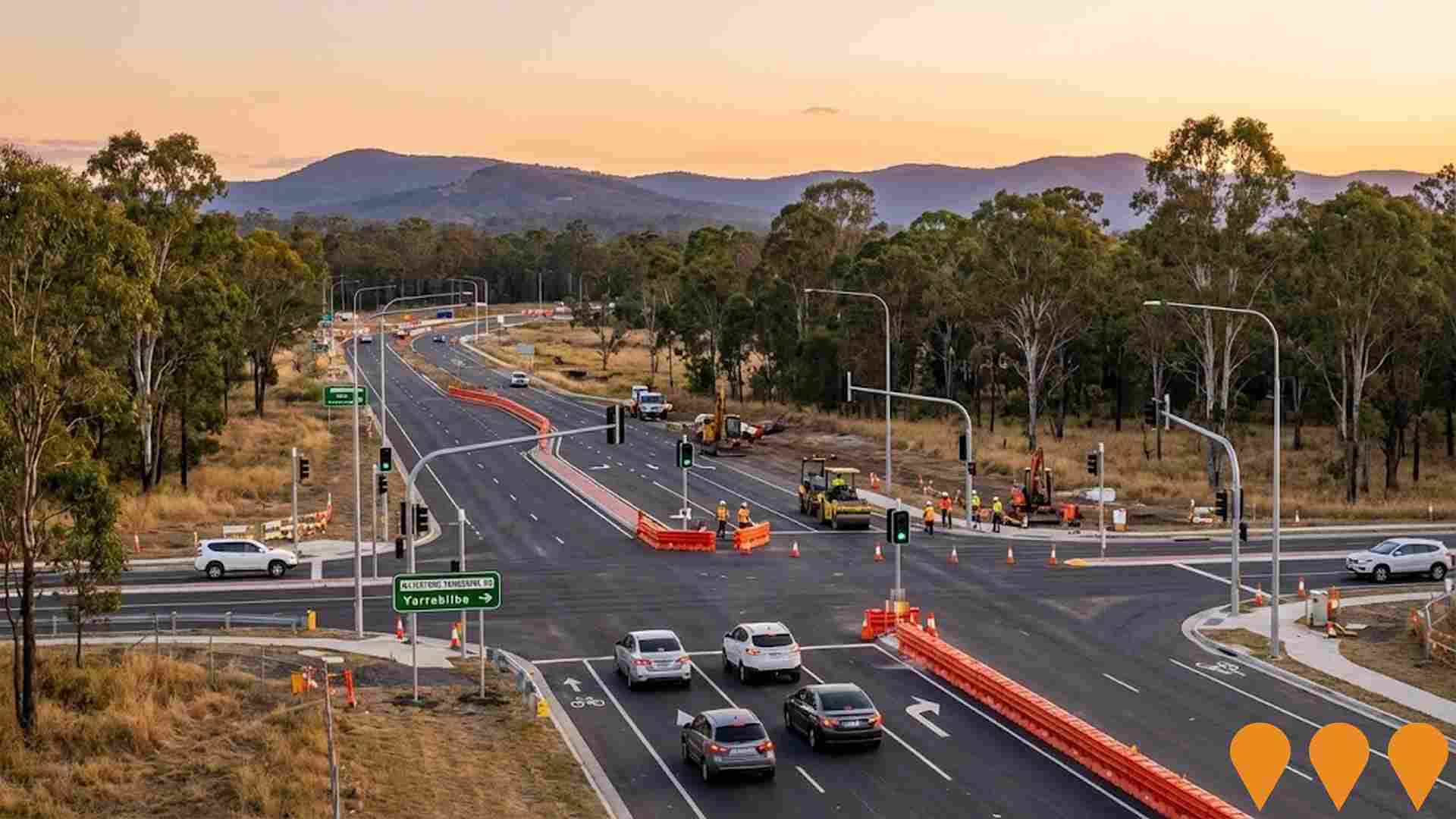
The Buzz at Yarrabilba
A $7.4 million community hub delivered through a partnership between the Queensland Government, Logan City Council, Brisbane Catholic Education, and Lendlease. It is a welcoming, inclusive space enabling the community to connect, learn, earn, and innovate, with facilities including community spaces, TAFE Queensland campus, youth areas, and employment services. Managed by YMCA Queensland.
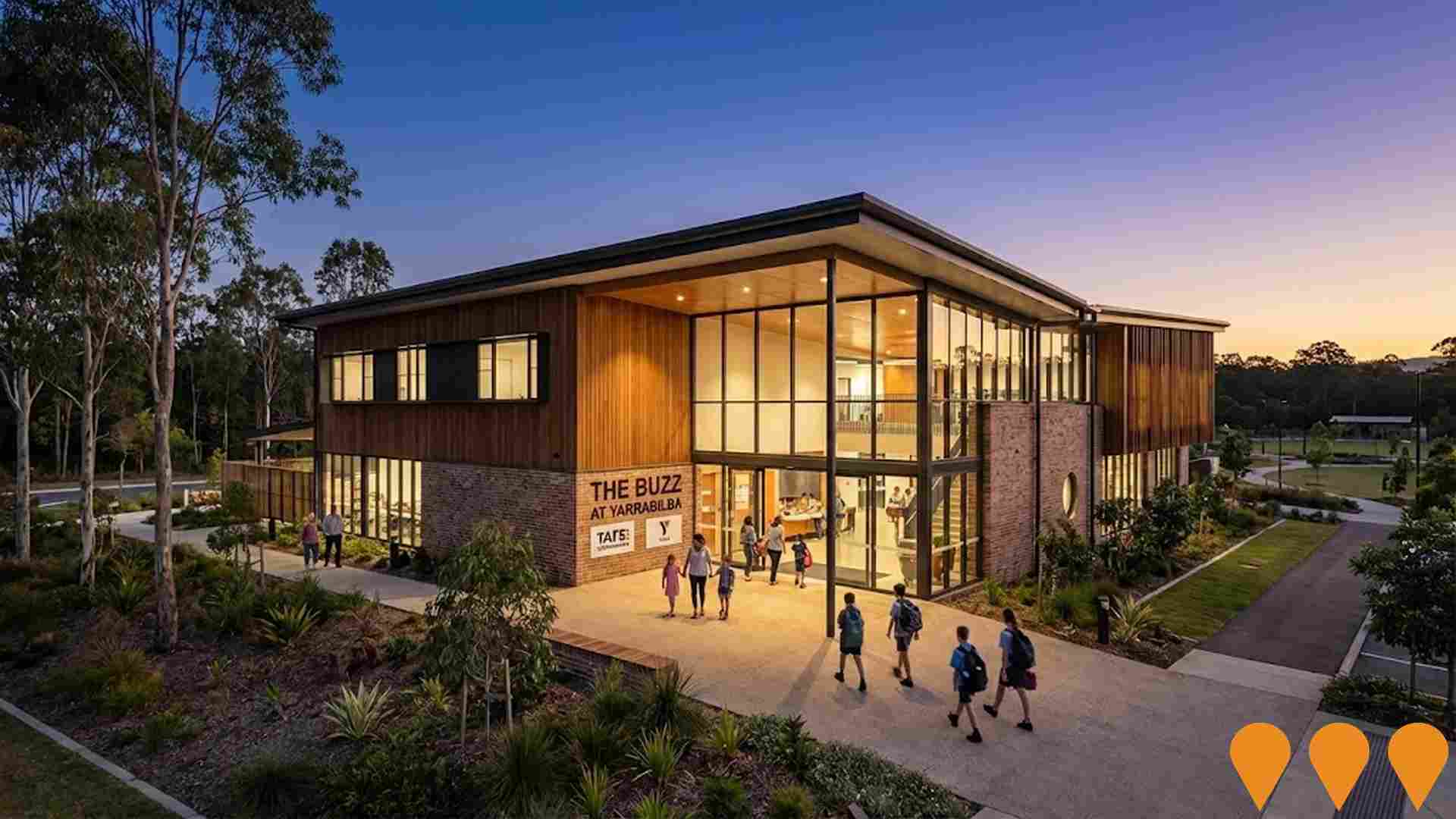
Chambers Flat Wastewater Treatment Plant
Logan Water is planning a new wastewater treatment plant at Chambers Flat to initially service around 60,000 equivalent persons and unlock more than 20,000 new homes across Yarrabilba, Park Ridge and Logan Village. The Queensland Government has committed $135.98 million towards the $334.53 million project under the Residential Activation Fund. Early enabling works include pipelines and pump stations, with staged connections targeted from 2028.
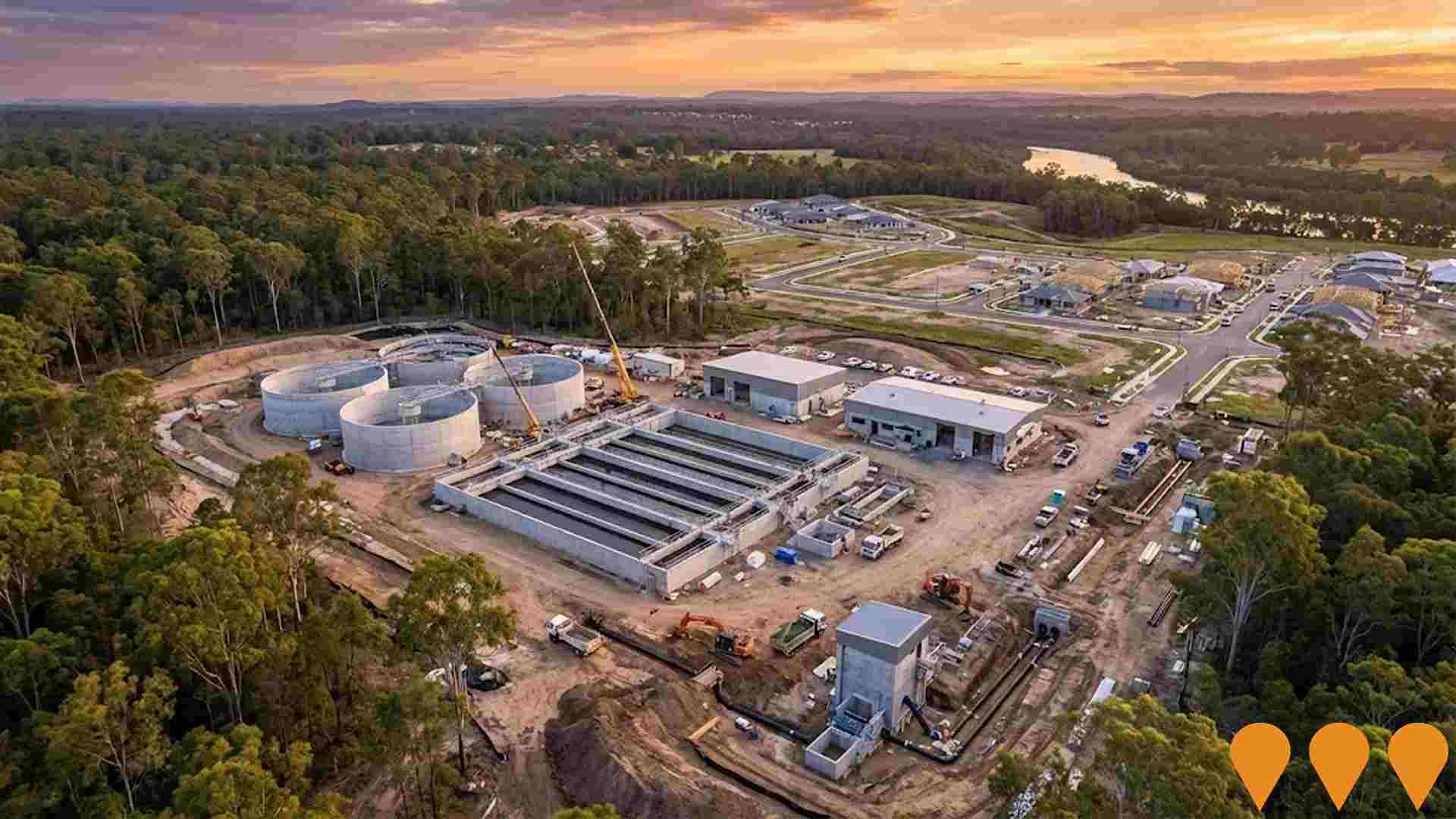
Employment
Yarrabilba has seen below average employment performance when compared to national benchmarks
Yarrabilba's workforce is balanced across white and blue-collar jobs. The construction sector stands out with a high representation, an unemployment rate of 5.1%, and an estimated employment growth of 4.8% over the past year.
As of June 2025, 6,812 residents are employed, with an unemployment rate of 5.1%, compared to Greater Brisbane's rate of 4.1%. Workforce participation is at 67.5%, slightly higher than Greater Brisbane's 64.5%. Key industries include health care & social assistance, construction, and retail trade. Construction employment is particularly high, with a share 1.4 times the regional level.
Conversely, professional & technical services show lower representation at 4.0% compared to the regional average of 8.9%. Employment opportunities locally appear limited based on Census data comparisons. Between June 2024 and June 2025, employment levels increased by 4.8%, while labour force also grew by 4.8%, keeping unemployment relatively stable at 5.1%. In comparison, Greater Brisbane recorded employment growth of 4.4% and labour force growth of 4.0%, with a decrease in unemployment to 3.7%. Jobs and Skills Australia's national employment forecasts from May 2025 project overall employment growth of 6.6% over five years and 13.7% over ten years. Applying these projections to Yarrabilba's employment mix suggests local growth of approximately 6.1% over five years and 13.0% over ten years, though these are simple extrapolations for illustrative purposes only and do not account for localized population projections.
Frequently Asked Questions - Employment
Income
Income levels sit below national averages according to AreaSearch assessment
Yarrabilba's median taxpayer income was $50,427 and average income was $56,403 in financial year 2022, according to postcode level ATO data aggregated by AreaSearch. This is lower than the national average of $62,198 for that year. In comparison, Greater Brisbane had a median income of $55,645 and an average income of $70,520 in 2022. Based on Wage Price Index growth from financial year 2022 to September 2025, estimated median income for Yarrabilba would be approximately $57,482 and average income $64,294. In the 2021 Census, household, family, and personal incomes in Yarrabilba ranked modestly, between the 42nd and 52nd percentiles. Income distribution data shows that 42.2% of locals (6,770 people) earn between $1,500 - 2,999 per week, similar to the broader area where 33.3% fall into this range. Housing affordability is severe in Yarrabilba, with only 77.9% of income remaining after housing costs, ranking at the 35th percentile nationally.
Frequently Asked Questions - Income
Housing
Yarrabilba is characterized by a predominantly suburban housing profile, with a higher proportion of rental properties than the broader region
Yarrabilba's dwelling structures, as per the latest Census, consisted of 92.8% houses and 7.2% other dwellings (semi-detached, apartments, 'other' dwellings). Brisbane metro had 97.3% houses and 2.7% other dwellings. Home ownership in Yarrabilba was at 71%, with mortgages at 33.4% and rentals at 59.5%. The median monthly mortgage repayment was $1,703, lower than Brisbane's $2,000 average. Median weekly rent in Yarrabilba was $375, close to Brisbane's $390 average. Nationally, Yarrabilba's mortgage repayments were below the Australian average of $1,863, while rents were comparable at $375.
Frequently Asked Questions - Housing
Household Composition
Yarrabilba features high concentrations of family households, with a lower-than-average median household size
Family households constitute 82.5% of all households, including 38.7% couples with children, 18.1% couples without children, and 24.8% single parent families. Non-family households comprise the remaining 17.5%, with lone person households at 14.5% and group households comprising 3.0%. The median household size is 3.1 people, smaller than the Greater Brisbane average of 3.2.
Frequently Asked Questions - Households
Local Schools & Education
Educational outcomes in Yarrabilba fall within the lower quartile nationally, indicating opportunities for improvement in qualification attainment
The area's university qualification rate is 12.8%, substantially lower than Greater Brisbane's average of 30.5%. Bachelor degrees are the most common at 9.3%, followed by postgraduate qualifications (1.9%) and graduate diplomas (1.6%). Trade and technical skills are prominent, with 47.1% of residents aged 15+ holding vocational credentials - advanced diplomas (11.5%) and certificates (35.6%). Educational participation is high, with 37.4% of residents currently enrolled in formal education: 17.1% in primary, 8.7% in secondary, and 3.2% in tertiary education.
The area has five schools with a combined enrollment of 2,993 students, demonstrating typical Australian school conditions (ICSEA: 968) with balanced educational opportunities. Education provision is balanced, with three primary and two secondary schools serving distinct age groups. The area functions as an education hub, offering 18.6 school places per 100 residents - significantly higher than the regional average of 12.0 - attracting students from surrounding communities.
Frequently Asked Questions - Education
Schools Detail
Nearby Services & Amenities
Transport
Transport servicing is very low compared to other areas nationally based on assessment of service frequency, route connectivity and accessibility
Yarrabilba has 14 active public transport stops. These are served by buses only. One route operates daily, offering a total of 123 weekly passenger trips across all stops.
Residents have limited access to these services, with an average distance of 671 meters to the nearest stop. On average, there are 17 trips per day, equating to around 8 weekly trips per stop.
Frequently Asked Questions - Transport
Transport Stops Detail
Health
The level of general health in Yarrabilba is notably higher than the national average with prevalence of common health conditions low among the general population though higher than the nation's average across older, at risk cohorts
Yarrabilba shows better-than-average health outcomes with fewer common health conditions among its general population compared to national averages. However, higher prevalence is seen in older and at-risk cohorts.
Private health cover is low, at approximately 48% of the total population (around 7,701 people), lower than the national average of 55.3%. The most prevalent medical conditions are mental health issues affecting 11.2% of residents and asthma impacting 10.1%. About 71.6% of residents report having no medical ailments, compared to 69.6% in Greater Brisbane. The area has a lower proportion of seniors aged 65 and over at 5.7% (914 people), compared to Greater Brisbane's 11.4%. Health outcomes among seniors require more attention than the broader population.
Frequently Asked Questions - Health
Cultural Diversity
The level of cultural diversity witnessed in Yarrabilba was found to be above average when compared nationally for a number of language and cultural background related metrics
Yarrabilba's cultural diversity is above average, with 20.8% of its population born overseas and 11.7% speaking a language other than English at home. Christianity is the predominant religion in Yarrabilba, comprising 37.3% of the population. Notably, the 'Other' category makes up 1.5%, slightly higher than Greater Brisbane's 1%.
The top three ancestry groups are Australian (28.1%), English (27.6%), and Other (9.4%). There is overrepresentation of New Zealanders at 2.1% compared to the regional average of 1.6%, Maori at 3.2% versus 1.4%, and Samoans at 2.3% against a regional average of 0.7%.
Frequently Asked Questions - Diversity
Age
Yarrabilba hosts a very young demographic, ranking in the bottom 10% of areas nationwide
The median age in Yarrabilba is 27 years, which is notably lower than Greater Brisbane's average of 36 and considerably younger than Australia's median age of 38. Compared to the Greater Brisbane average, the 5-14 age cohort is notably over-represented in Yarrabilba at 21.1%, while the 55-64 year-olds are under-represented at 5.5%. This concentration of the 5-14 age group is well above the national average of 12.2%. Post-2021 Census data shows that the 35 to 44 age group has grown from 14.1% to 16.1%, while the 15 to 24 cohort increased from 12.8% to 14.1%. Conversely, the 0 to 4 age group has declined from 13.3% to 10.0%, and the 25 to 34 age group dropped from 21.4% to 18.9%. Looking ahead to 2041, demographic projections reveal significant shifts in Yarrabilba's age structure, with the 15 to 24 cohort projected to grow by 90%, adding 2,023 residents to reach a total of 4,279.
